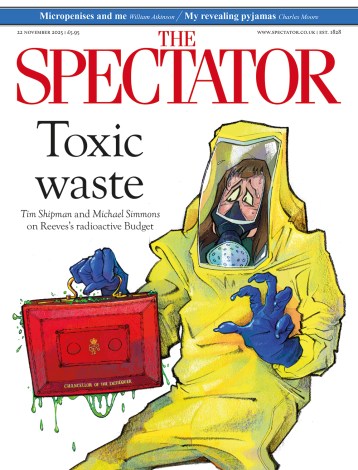Until recently, a lively sub-genre of English literature was that devoted to London’s creepier, darker back streets. Peter Ackroyd took us on a grim tour of early 1980s (and early 1700s) Shoreditch and Limehouse in Hawksmoor; Iain Sinclair angrily traversed the weed-sprouting, rubbish-strewn streets of Hackney and Tilbury and what he called the ‘sumplands’ of Dagenham in Downriver.
Angela Carter peeked through the yellowing net curtains of dowdy south London, while Michael Moorcock beckoned us to explore the gentle sadness of peeling suburban avenues. Go further back and you will find Patrick Hamilton’s malign vision of Earls Court, Arthur Conan Doyle’s all-pervading fogs, Dickens’s appalling rookeries. The point is that it is very hard to find examples of writers who have viewed London as a city of light.
But the creepier parts of town that have (perversely) inspired so many London writers and artists are disappearing. Those alarming, dilapidated streets at the back of King’s Cross, for instance, have vanished, been pulled down and forgotten about in happy anticipation of the new Channel Tunnel rail link. What of Southwark, which used to be a reliably unnerving landscape of blackened brick and broken window? It’s all been tarted (or Tated) up, streets gleaming like new buttons.
Downriver, there is Woolwich. Until very recently a stroll around this area, with its incredibly lowering views of the muddy Thames and stained grey concrete embankments, was guaranteed to throw a cold, damp towel of depression around the soul. These days, one can wander along the newly landscaped riverfront near the old artillery and feel like a computer-generated image in a glossy estate-agent’s brochure.
Melanie McGrath’s recent book Silvertown, a haunting account of the life of her Eastender grandmother, is commendably unsentimental about life on that dark docklands peninsula. The area is now haunting for quite a different reason: with the advent of London City Airport, the gigantic Excel exhibition centre and countless waterside yuppie flats, the place feels like a silent science-fiction city. It is the opposite of dark: slivers of dancing light from dock waves bounce on to bright white surfaces so that one has to shield one’s eyes.
The list goes on: from Haggerston to Hoxton, Deptford to Dalston, Essex Road to Erith Marshes, the more sinister corners of the city have brightened up beyond recognition. We have only to think back a few years to recall the dank scariness of Liverpool Street station (now a rather jolly, colourfully painted spot, but the older version gets an important cameo in W.G. Sebald’s Austerlitz), the ghostly little shops of Old Street, the absolute don’t-go-there atmospheres of Shadwell, Balls Pond Road, Holloway Road and Canning Town. The inner-city estates are falling and rising. Hackney, as the poet/novelist/all-round London visionary Sinclair has written, is thick with the dust of development.
It might even be possible to blame Iain Sinclair himself for this. Everywhere he writes about (from White Chappell, Scarlet Tracings to Lights Out for the Territory), all those entropic areas filled with devil dogs and counter-culture artists, end up being given a jolly good spring-clean and a lick of paint as the middle classes, eagerly lapping up his colourful prose, rush to move in.
Indeed, in his newly published book London Orbital, Sinclair appears to acknowledge his uncanny power. Referring to the Three Mills at Bow, he writes, ‘It’s an infallible rule that anything you spot on your rambles, anywhere you nominate, will be discovered; rescued, tarted up, divided into viable units.’
The complaints about the general state of London – its grubbiness, untidiness, the traffic, the congestion, the displeasing architecture – go on much as they probably have done for the last 2,000 years. But there is a difference. Of course, the streets are not any safer than they were. But they don’t feel as threatening.
Mayor Ken cannot claim any credit; it is more to do with an increasingly outward-looking populace, a vibrant economy, and the fact that London’s districts constantly shift and change in atmosphere.
It’s a sorry look-out for London authors, though. Ackroyd’s Limehouse, a wasteland featuring vagrants dancing drunkenly round fires, is now a yacht-owners’ exclusive enclave. Sinclair’s sumplands, the grey plains of the A13, teeter on the brink of fashion. And occasionally frightening though the terraces of Leytonstone and Walthamstow can be these days, they very much lack the decaying poetry, the picturesque horror of the dark city so brilliantly caught by these writers across the years.





Comments